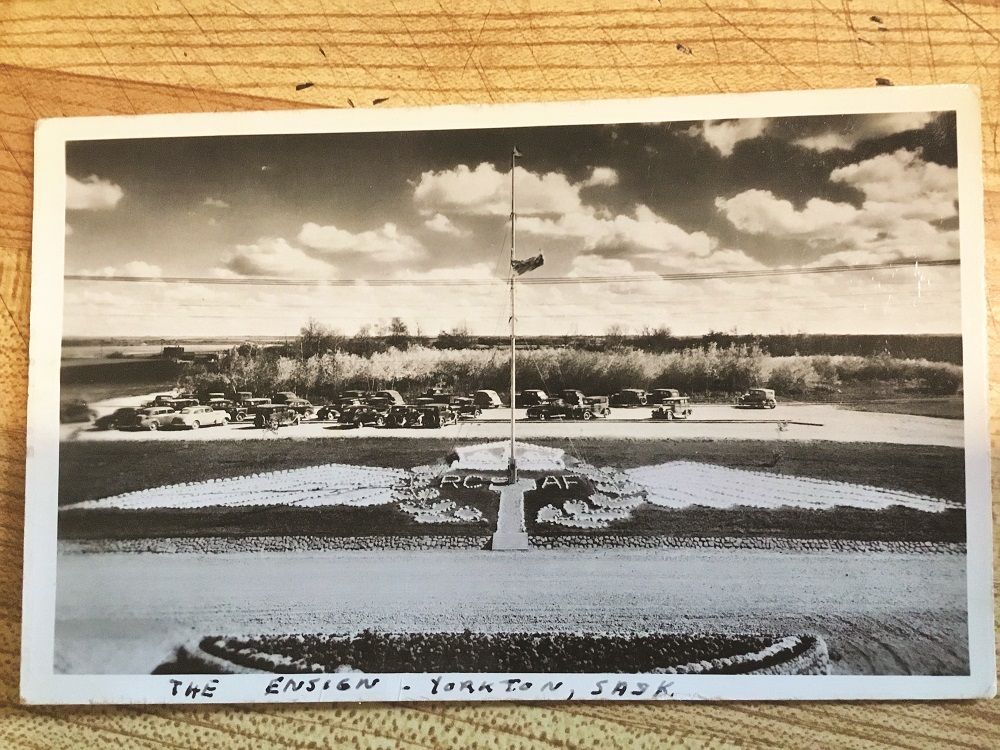By Mabel Brannigan
Along with the military, the RCAF grew at a phenomenal rate until 249,662 men and women were in RCAF uniform. This was due to the famous Commonwealth-led training plan in Canada which prompted President Roosevelt to say “Canada is the aerodrome of democracy.”
Canada graduated 3,000 air crew each month from Commonwealth countries around the world which sprang up across Canadian stations. The prairies were ideal. By the end of the war, Canada had trained 50,000 Commonwealth pilots.
I spent time on the Yorkton, Saskatchewan pilot training base. At RCAF station Yorkton, Saskatchewan, Canso aircraft were used for training pilots. Other Commonwealth bases trained 18,500 wireless operators and gunners and 15,900 air navigators. Canadian airmen served as convey escorts and were credited with 90 Nazi kills in the Battle of Britain as well as bombing raids in Europe. Five Spitfires were the first planes from RCAF 40 Squadron to destroy an enemy jet fighter. Also, Squadron 417, an RCAF dog fight squadron, flew with the famous Desert Air Force over Egypt and northern Italy while others served in virtually every theatre of the Second World War.
The RCN and Merchant Seamen have an equally distinguished record and participated in many important sea battles. Canadian destroyers assisted in the evacuation of Dunkirk as well as sinking of the Bismarck in May, 1941. They ferried British, American, and Canadian troops ashore in North Africa, Sicily, Italy and Normandy invasions.
But Canada’s Navy and Merchant Marine earned their greatest reputation in the Atlantic where dreaded Nazi submarines waited to strike with torpedos and where 1,190 Canadian sailors were sent to their watery graves in the Battle of the Atlantic. The RCN and the RCAF are credited with sinking 47 Nazi subs during the Second World War.
Although 1941 was a year of savage fighting with many losses, at home in Haliburton, the feeling of hopelessness and despair seemed to have lessened what 1940 brought. In Haliburton County, most young people were either in the service, or in war-related factories. The Lindsay Arsenal announced they would be taking eight girls into their man-run arsenal, and you can bet I was at the head of the line. I worked three shift work until I was old enough for military service. The men in the foundry would gape through the door in disbelief to see eight girls wearing coveralls and a bandana-covered head. It was a sight to behold. But the girls had money.
In the homes in Haliburton, families were close-knit and lived simply. After such a long Depression, it was good to bring some money in, even if the men got considerably more for doing the same job. Rationing of gas, tea, coffee, sugar, meat, butter, booze, etc. did not impose a great hardship in Haliburton. Margarine was not invented yet.
People complained about the songs we sang. Some of the titles were ‘We Heil, Heil, Heil Right in Der Fueher’s Face’ ‘Three Little Fishies’ ‘Mairzy Doats and Dozy Doats. Also, people complained that young people didn’t obey their parents and we didn’t. When non-essential goods were cut off to Canada, Canadian cartoonists soon fixed the comic book industry with Johnny Canuck and Spy Smasher.
The word celebration is using sparingly. It is hard to celebrate valour and victory and simultaneously mourn the sacrifice of those of our comrades who have died. We rejoice, but we grieve. That’s what we will do on the 75th anniversary.
For some, the world war years of 1939- 1945 are simply a piece of history, for others, the memories that those years bring are all too vivid.





